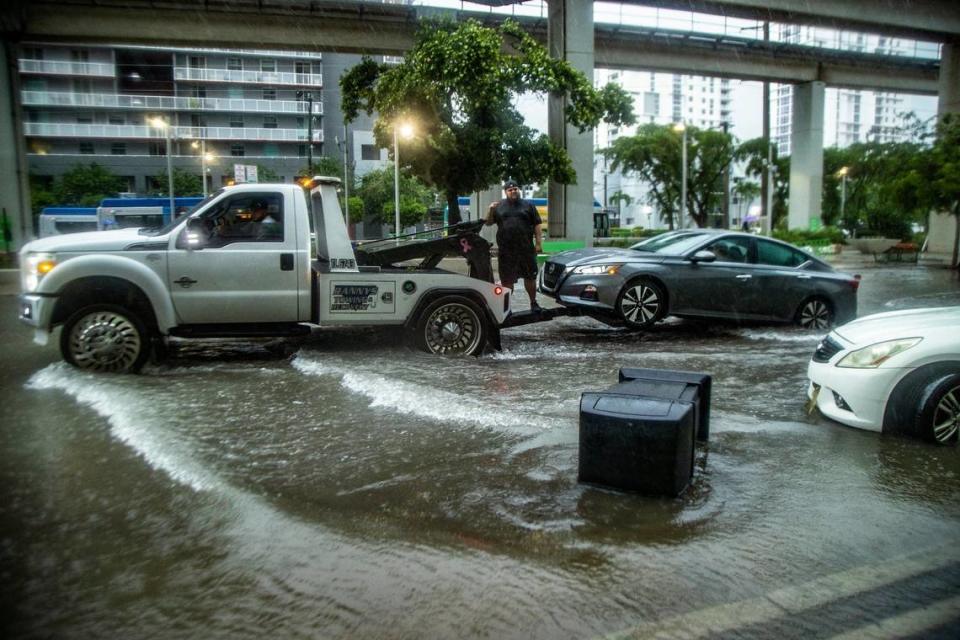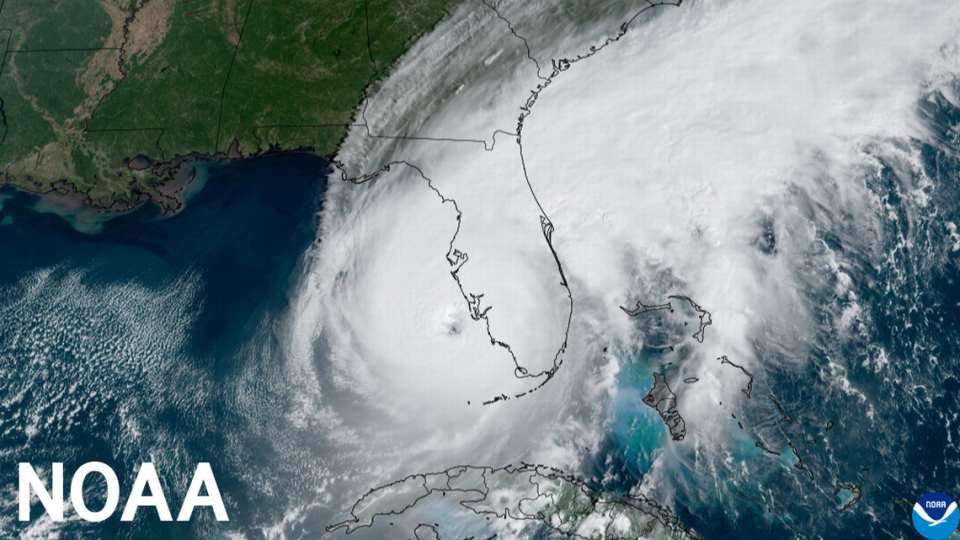Hurricane season is here — and we have some advice on how to deal with a Florida storm
It’s the season Floridians love to hate. But we have to prepare.
Hurricane season officially started Thursday, June 1. It runs through Nov. 30.
Yes, we know that getting ready for tropical storms and hurricanes can be a lot of work. So we’ve put together a guide to make it easier for you.
Here’s what to know about hurricane kits, evacuation plans, emergency contacts and steps to take during a storm scenario.
KNOW MORE: What’s the worst thing you can do in a hurricane? How to avoid harm in a Florida storm
Preparing hurricane kits
What to put inside: Make sure you are stocked up on supplies before a tropical storm or hurricane threatens the area. If you already have one ready from last year, remember that kits need to be refreshed.
Here’s what a typical kit can include:
▪ Bottled water
▪ Batteries and flashlights
▪ Non-perishable food
▪ Change of clothes
▪ Paper maps
▪ Medicine and prescriptions
▪ First-aid kit
▪ Cash
▪ Emergency contact information
▪ Important documents in waterproof containers or bags
▪ Pet supplies (food, litter, licenses, leashes, meds)

Know your evacuation zone
When the worst storms track toward Florida, it’s important to know when and where to evacuate.
Determining when it is time to pack the car and head north depends on the strength of a storm and where you live.
South Florida county websites offer help in knowing your evacuation zone and when to leave. Here’s where to find information on your area.
Miami-Dade: miamidade.gov/hurricane
Broward: broward.org/hurricane
Monroe: monroecounty-fl.gov/897/Evacuation-Information
Important contacts
Emergency numbers: Staying informed on potential storms, tracking free resources and being aware of evacuation orders is a key to surviving the worst situations.
Media: Keep up to date with local media, including at MiamiHerald.com. Government agencies also share emergency information through social media and websites.
Here are some key contacts to bookmark, jot down or add to your phone:
Miami-Dade
▪ Phone numbers: 311 (general information and report problems); 911 (for emergencies)
▪ Emergency alerts: Sign up to by email or online
▪ Websites: miamidade.gov/hurricane (tropical storm and hurricane info); https://www8.miamidade.gov/global/emergency/home.page (Miami-Dade Emergency Management)
▪ Twitter: @MiamiDadeCounty (Miami-Dade County); @MiamiDadeEM (Miami-Dade Emergency Management); @MayorDaniella (Miami-Dade Mayor Daniella Levine Cava); @MiamiDadePD (Miami-Dade police)
Broward
▪ Phone numbers: 311; 911
▪ Emergency alerts: Sign up at https://member.everbridge.net/index/453003085614962#/login
▪ Websites: broward.org/hurricane (tropical storm and hurricane information); broward.org/atrisk (emergency evacuation assistance)
▪ Twitter: @ReadyBroward (Broward County Office of Emergency Management); @LamarPFisher (Broward County Mayor Lamar Fisher); @browardsheriff (Broward Sheriff’s Office)
Florida Keys
▪ Phone numbers: 305-294-4641 (Monroe County’s Office of Emergency Management); 911
▪ Emergency alerts: For sign up visit https://member.everbridge.net/index/453003085614966#/login
▪ Twitter: @monroecounty (Monroe County BOCC); @mcsonews (Monroe County Sheriff’s Office)
Statewide
▪ National Hurricane Center: https://www.nhc.noaa.gov/ (website); @NHC_Atlantic (Twitter)
▪ National Weather Service: https://www.weather.gov/ (website); @NWSMiami, @NWSKeyWest (Twitter)
▪ Florida Division of Emergency Management: www.floridadisaster.org (website); @FLSERT (Twitter)
▪ Gov. Ron DeSantis: @GovRonDeSantis (Twitter)
▪ Florida Power & Light: fpl.com/storm (website); https://www.fpl.com/my-account/web-outage.html#wors/mainTab/phoneTab (check and report outages); @insideFPL (Twitter)
Running a hurricane simulation
Now that you know what resources to stockpile, what numbers to keep close and where to go if the worse comes to your neighborhood, let’s go through a simulated hurricane checklist — from when it’s out in the open ocean to its eventual dissipation.
A tropical storm or hurricane is coming:
▪ Prepare your hurricane kit.
▪ Inspect your shutters, roof and fences. Start putting up the shutters or board up your windows with 5/8-inch plywood.
▪ Start pruning your trees. Bringing your patio furniture, potted plants and pets inside. Tie down anything that could fly into the air.
▪ Fuel up your generator and car. Find a good place to park it that won’t be prone to flooding.
▪ Charge your devices.
▪ Get sandbags.
The storm has arrived:
▪ Stay in a room with few or no windows.
▪ Don’t take a bath or shower during the storm, lightning can travel through the plumbing.
▪ Don’t leave your house, even if it seems calm outside.
▪ Don’t use your generator during the storm; wait for it to pass.
▪ If your home begins to take on serious damage and debris start falling, get in a bathtub and pull a mattress over yourself.
The weather system has passed:
▪ Take down the shutters, bring out the patio furniture and start any outside cleanup.
▪ If you have no power, you can now run the generator but make sure it is at least 20 feet from the house or your neighbors.
▪ Keep aware of any curfews or boil-water orders.
▪ Report property damage, power outages and price gouging.


